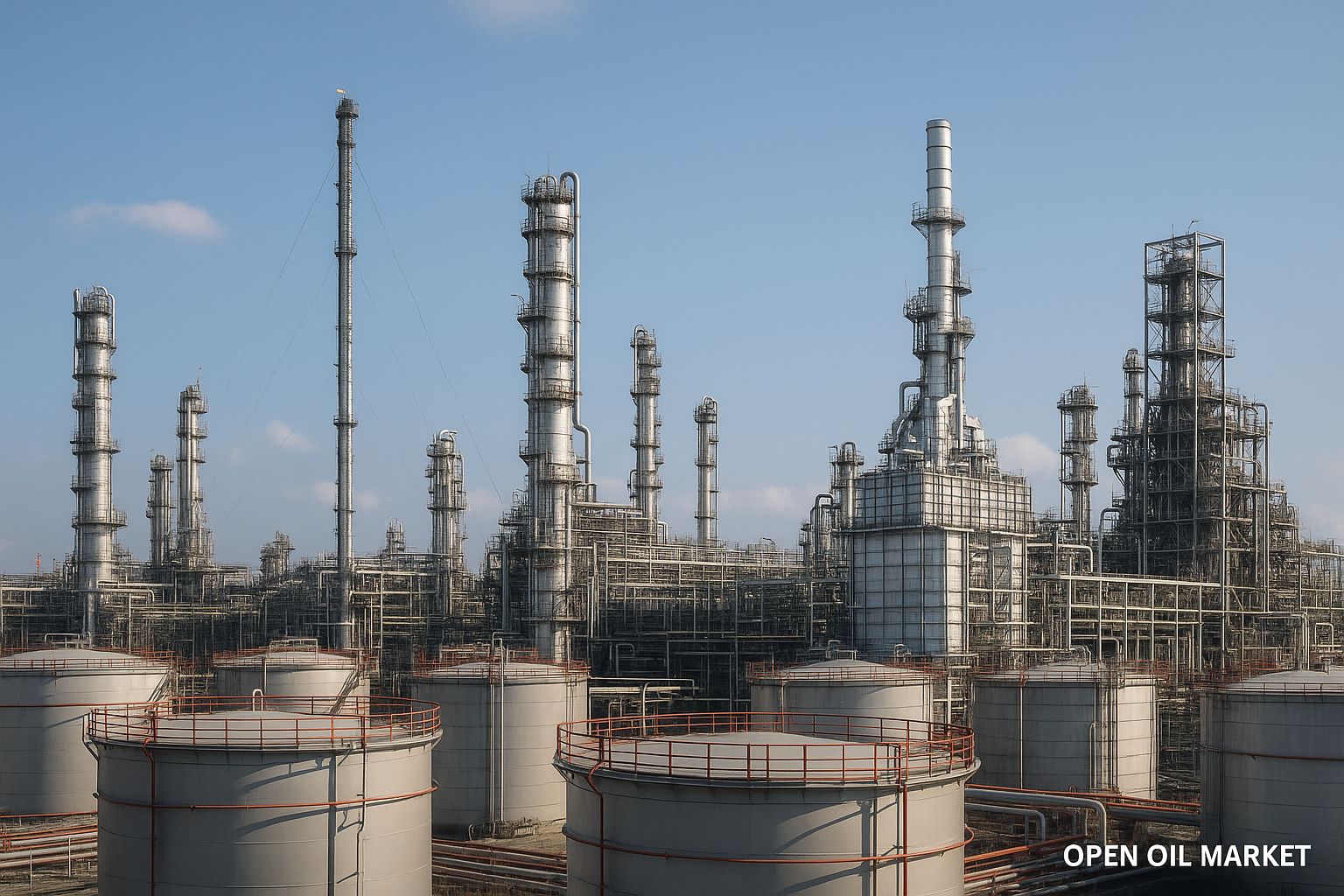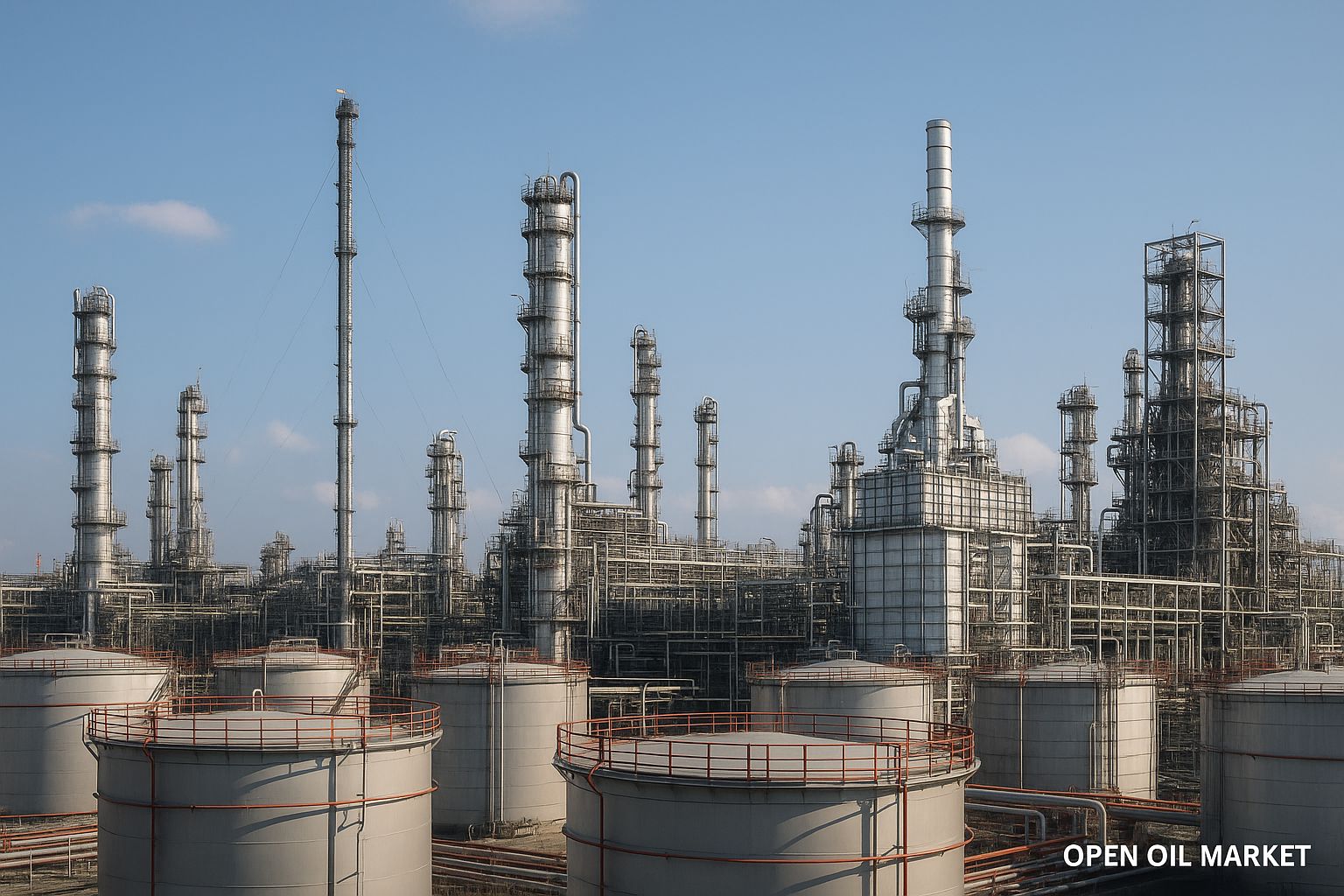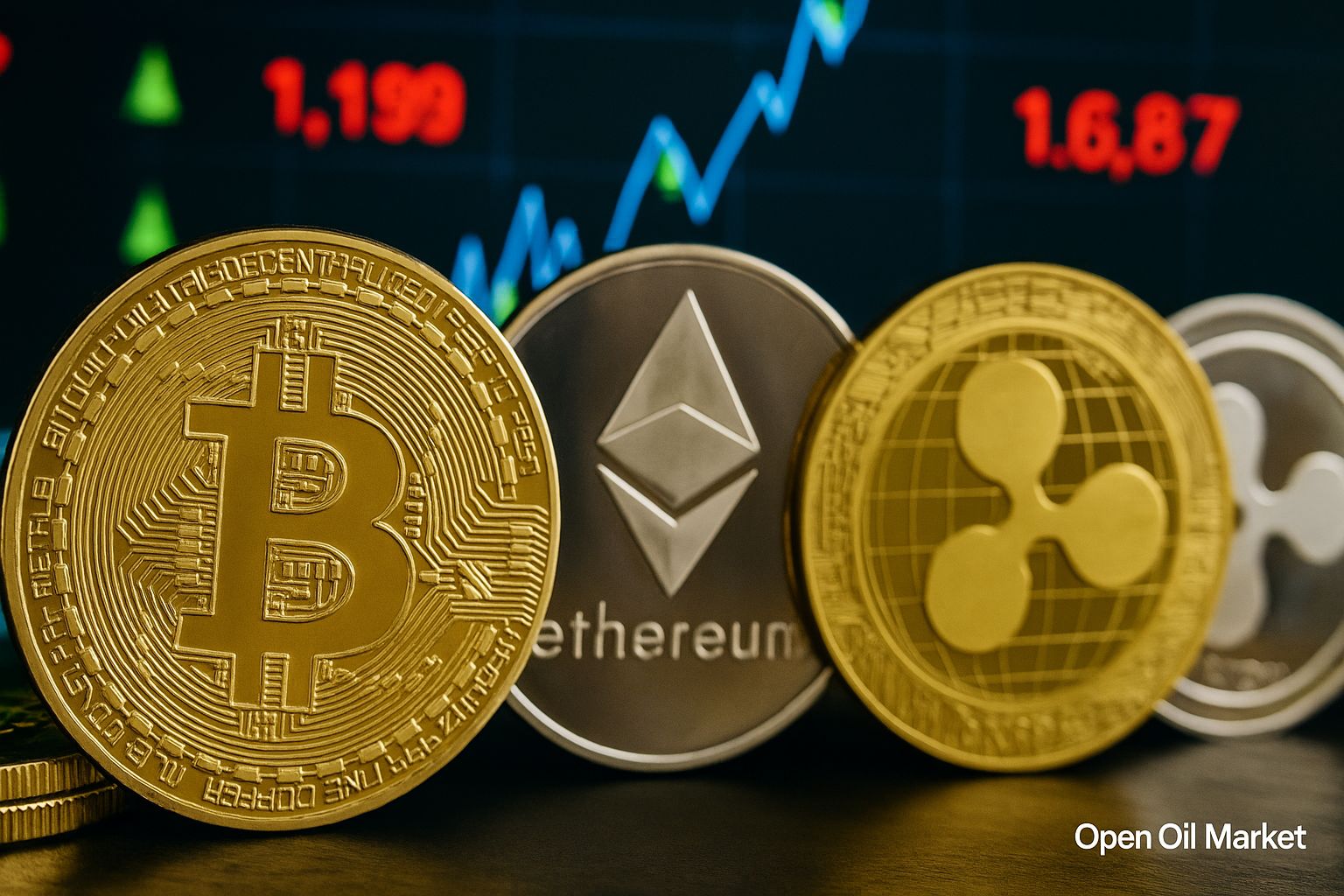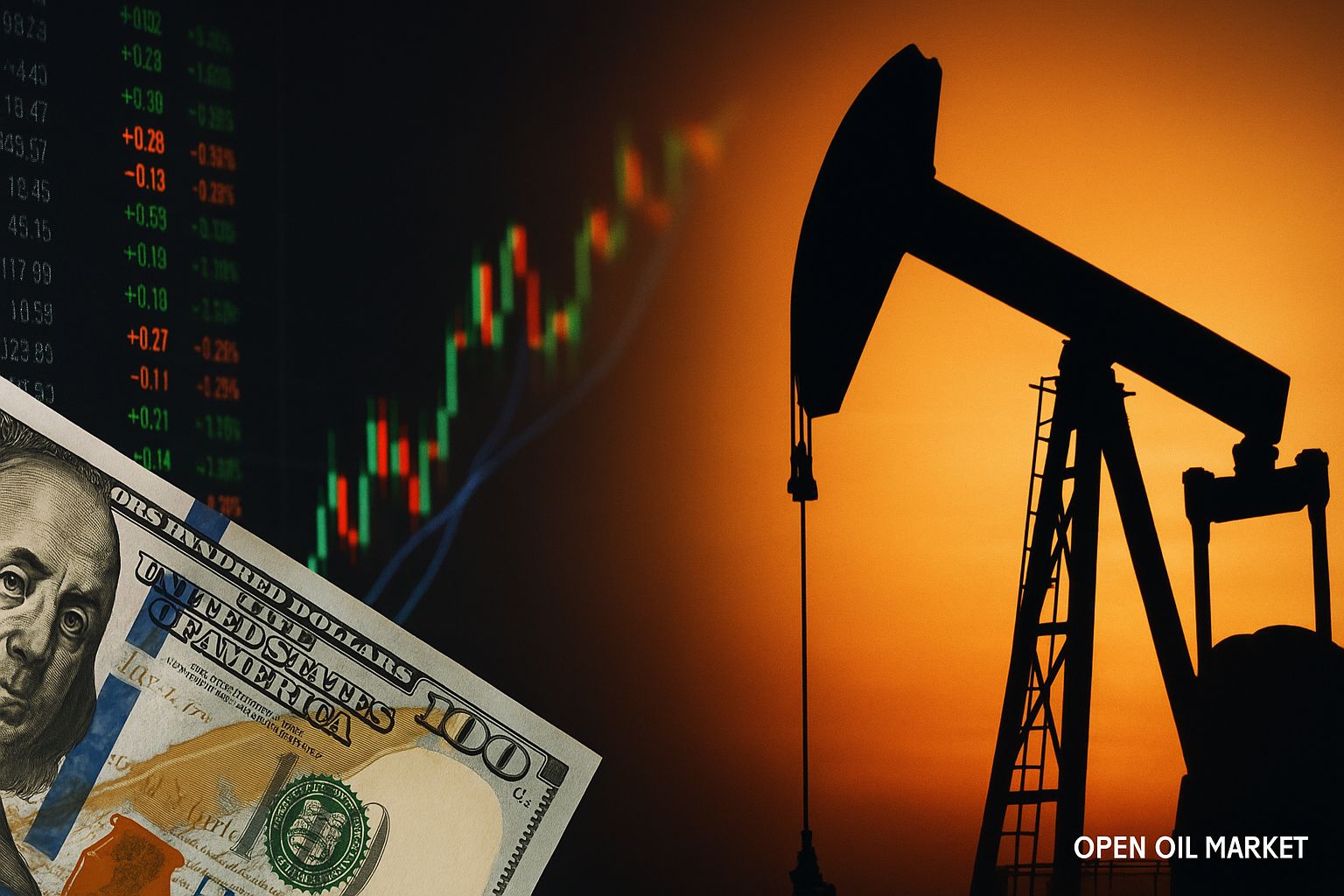
Current Energy Sector News as of August 24, 2025: Sanctions Escalate, Oil and Gas Prices Rise, India and China Strengthen Energy Cooperation, Russia Implements Measures to Stabilize Fuel Prices. Comprehensive Overview of the Global Fuel and Energy Complex.
The latest developments in the fuel and energy sector (FES) as of August 24, 2025, are attracting the attention of investors and market participants due to their conflicting signals. A week has passed since the much-anticipated summit between Russia and the USA in Alaska, but there was no significant breakthrough in relations, and the negotiation process is effectively stagnating, heightening concerns about escalating sanctions.
The global oil market, which had previously been under pressure from excess supply and slowing demand, is showing a slight rebound this week – Brent crude prices are nearing the upper threshold of $60 per barrel, reflecting a fragile balance of factors at play.
The European gas market continues to maintain relatively high inventory levels: underground gas storage facilities (UGS) in the EU are almost 90% full, providing a solid reserve before winter. However, amid ongoing uncertainty, gas prices have risen for the first time in several weeks.
Meanwhile, the global energy transition continues to accelerate. Many regions are reporting new records for renewable energy generation, although countries are still relying on traditional resources for the reliability of their energy systems.
In Russia, following a recent spike in prices, authorities are implementing a set of measures aimed at stabilizing the situation in the domestic fuel market. Below is a detailed review of key news and trends in the oil, gas, electricity, and raw materials sectors as of this date.
Oil Market: Sanction Risks Trigger Price Recovery
Global oil prices experienced an uptick last week after several weeks of decline; however, they remain relatively stable influenced by fundamental factors. North Sea Brent rose from approximately $65 to ~$68 per barrel (with U.S. WTI increasing to $63–65), marking the first weekly price increase in the last three weeks. Current levels are still about 10% lower than year-ago values, reflecting a gradual market correction following the peaks of the 2022-2023 energy crisis. Several factors continue to influence price dynamics:
- OPEC+ Production Increase: The oil alliance is methodically increasing market supply. In August 2025, the collective production quota for key participants in the deal was raised by approximately 548 thousand barrels per day, with a comparable increase expected in September. This continues the trend of the previous months – since spring, restrictions have gradually eased, leading to a rise in global oil and petroleum product inventories.
- Slowing Demand Growth: The pace of global oil consumption is declining. The International Energy Agency (IEA) has revised its demand growth forecast for 2025 to about 0.7 million barrels per day (down from over 2.5 million in 2023). Even OPEC's estimates are now more conservative, at around +1.3 million b/d for 2025. Contributing factors include weakening economic activity and high prices in previous years, which have spurred energy conservation. An additional factor is slowing industrial growth in China, which limits the appetite of the world's second-largest oil consumer.
- Geopolitical Uncertainty: Prolonged peace talks and new sanctions have again introduced a risk premium into the market. On one hand, the lack of progress in conflict resolution suggests continued (and strengthened) U.S. sanctions pressure on Russia, pushing prices higher. On the other hand, the very fact of maintaining diplomatic contacts prevents panic from engulfing the market. As a result, oil prices remain within a narrow range, lacking the impetus for rapid increases or sharp declines.
The combined impact of these factors is creating a moderate supply-demand imbalance, keeping the oil market near a surplus state. Exchange prices remain significantly lower than last year's peaks. Some analysts believe that if current trends persist, the average Brent price could fall to around $50 per barrel in 2026.
Gas Market: Full Storage Does Not Exclude Price Increases
The focus in the gas market is on Europe. EU countries are rapidly filling their gas storage facilities in preparation for the fall and winter season; current UGS levels are about 90% full, providing a solid reserve for the winter and previously keeping prices at moderate levels. However, as hopes for a quick peace fade, traders are once again pricing in supply shortage risks. Amid the absence of prospects for a significant volume return from Russia and the onset of a new phase of repairs at North Sea fields in Norway, European gas prices have risen. Futures quotes for the next month at the TTF hub have increased from ~$380 to ~$410 per 1,000 cubic meters – the first increase after several weeks of decline.
In light of the prolonged conflict, Europe will likely continue facing gas supply constraints, compensating for lost volumes through purchases of liquefied natural gas (LNG) and competing with Asia for higher-priced supplies. The replenishment of European stocks is proceeding more slowly than last year, although their absolute level is now significantly higher, reducing risks. Overall, gas prices remain well below the peak levels of 2022 thanks to accumulated reserves and demand reduction measures. Nevertheless, the impending winter and uncertainty regarding supply could maintain fuel market volatility in the coming months.
International Politics: U.S.-Russia Dialogue Stagnates, Sanctions Pressure Increases
On August 15, a meeting took place in Anchorage (Alaska) between the presidents of Russia and the USA. A week later, the outcomes remain unclear: no breakthroughs on key issues were achieved, and negotiations have effectively reached an impasse. U.S. President Donald Trump expresses a desire to organize a direct summit between Russia and Ukraine and is "watching the process from the sidelines," but so far there has been no movement towards a meeting between Vladimir Putin and Volodymyr Zelensky. Russian Foreign Minister Sergey Lavrov noted the absence of an agenda for a potential summit, placing responsibility on Kyiv, which, according to him, is saying "no" to any constructive proposals.
As the likelihood of an imminent truce decreases, the risk of intensified Western sanctions against Russia increases. ING analysts emphasize that the less likely a quick peace becomes, the greater the chance that Washington will move towards tightening restrictions. An unprecedented step has already been taken targeting a Russian ally: Donald Trump signed an order to increase tariffs on imports from India by another 25 percentage points, raising the total tariff to 50% starting August 27, in response to New Delhi's ongoing purchases of Russian oil. This measure marks a new phase of sanctions pressure, signaling that similar measures could also threaten other buyers of Russian energy resources. India has expressed disappointment, emphasizing that it was not forewarned about such harsh trade measures; at the same time, New Delhi states that its oil imports from Russia are dictated by national needs and cannot be sharply reduced.
The West continues to exert pressure in other areas as well. The U.S. has imposed sanctions on several companies and tankers engaged in Iranian oil trade, while the UK has targeted an Iranian business magnate and associated entities. Although these measures do not directly concern Russia, they reflect a broader strategy of strict control over global energy flows. Thus, international political factors continue to cast a shadow over the FES market: dialogue between powers is stagnating, and the sanctions regime remains stringent, restraining prospects for normalizing energy resource trade.
Asia: India Maintains Imports Despite Pressure, China Boosts Production
- India: Faced with unprecedented Western pressure (including a twofold increase in U.S. tariffs on Indian exports to 50% starting August 27 for cooperation with Russia), the country has clearly defined its position: a sharp reduction in Russian oil and gas imports is unacceptable due to the critical role these supplies play in its energy security. New Delhi has negotiated more favorable terms for itself: Russian companies are forced to offer an additional discount on Urals oil (around $5 below Brent prices) to retain the Indian market. As a result, India continues to actively purchase Russian oil under favorable conditions and is even increasing its imports of petroleum products from Russia to meet rising domestic demand. At the same time, the country's leadership is taking steps to reduce reliance on imports in the long term. Prime Minister Narendra Modi announced the launch of a national program for deep-water oil and gas field exploration on Independence Day (August 15). Under this initiative, the state-owned company ONGC has begun drilling ultra-deep wells (up to 5 km) in the Andaman Sea, and the initial results are already considered promising. This "deepwater mission" aims to discover new hydrocarbon resources and bring India closer to the goal of energy independence. Additionally, at the meeting of foreign ministers in Moscow on August 21, India and Russia agreed to strengthen trade and economic ties, signaling New Delhi's intention to sustain energy cooperation despite external pressures.
- China: The largest Asian economy is also increasing energy procurement while boosting domestic production. Chinese importers remain leading buyers of Russian oil and gas: Beijing has not joined Western sanctions and has exploited the situation to procure raw materials at competitive prices. According to China's customs statistics, in 2024, the country imported approximately 212.8 million tons of oil and 246.4 billion cubic meters of natural gas – these volumes increased by 1.8% and 6.2%, respectively, over the previous year. In 2025, the import of energy resources continues to rise, albeit at a more moderate pace due to last year's high base. At the same time, Beijing is stimulating its own oil and gas production: from January to July 2025, national companies extracted 126.6 million tons of oil (+1.3% year-on-year) and 152.5 billion cubic meters of gas (+6%). The growth in domestic production helps partially offset the increase in consumption but does not negate the need for imports. The Chinese authorities continue to invest in developing fields and increasing well recovery technologies. Nevertheless, given the scale of its economy, China's dependence on energy resource imports will remain significant: analysts estimate that in the coming years, the country will import no less than 70% of its oil consumption and about 40% of its gas needs. Thus, India and China – the two largest Asian consumers – will continue to play a key role in global raw material markets, combining strategies for securing foreign supplies with the development of their own resource base.
Energy Transition: Record Growth in Renewable Energy and the Importance of Traditional Generation
The global transition to clean energy continues to gain momentum. Many countries are reporting new records in electricity generation from renewable sources. In Europe, as of the end of 2024, total generation from solar and wind power plants has for the first time exceeded that from coal and gas-fired plants. This trend has persisted into 2025: due to the commissioning of new capacities, the share of green electricity in the EU continues to grow, while the share of coal in the energy balance decreases after a temporary increase during the 2022-2023 crisis. In the USA, renewable energy has also reached historical levels – at the beginning of 2025, over 30% of total generation came from renewables, and the total output from wind and solar has for the first time surpassed coal-fired electricity production. China, as the leader in renewable energy capacity, adds tens of gigawatts of new solar panels and wind turbines each year, continuously breaking its generation records. According to IEA estimates, total investments in the global energy sector in 2025 will exceed $3.3 trillion, with more than half of these funds directed toward renewable energy projects, network modernization, and energy storage systems. In particular, the USA plans to bring around 33 GW of new solar power plants into operation during the year – a record volume, amounting to almost half of all new generating capacities.
Simultaneously, energy systems still rely on traditional generation to maintain stability. The growth of solar and wind shares poses challenges for network balancing during hours when renewable generation is absent. To cover peak demand and reserve capacity, gas and even coal plants are reactivated in several cases. For instance, in some regions of Europe last winter, there was a need to temporarily increase output from coal power plants during periods of low wind – despite environmental costs. Governments of many countries are investing in energy storage systems (industrial batteries, pumped hydro storage) and smart grids capable of flexibly managing loads. These measures are intended to enhance the reliability of energy supply as the share of renewables grows. Experts predict that by 2026-2027, renewable sources could become the dominant force globally in terms of electricity generation, overtaking coal. However, in the coming years, there remains a need to support conventional power plants as a safeguard against supply interruptions. Thus, the energy transition reaches new heights while requiring a delicate balance between green technologies and traditional resources.
Coal: Market Stability Amid High Demand
Despite the rapid development of renewables, the global coal market remains substantial and continues to be an integral part of the energy balance. Demand for coal is particularly high in the Asia-Pacific region, where economic growth and electricity needs sustain the intense consumption of this fuel. China – the world's largest consumer and producer of coal – is keeping coal burning levels close to record highs in 2025. Chinese mines produce over 4 billion tons of coal annually, covering most domestic needs; however, this barely suffices to meet the record demand during peak load periods (such as in hot summer months when air conditioning use surges). India, endowed with large coal reserves, is also increasing its use: more than 70% of the country's electricity is still generated from coal-fired plants, and absolute coal consumption is rising alongside the economy. Other developing countries in Asia (Indonesia, Vietnam, Bangladesh, among others) are constructing new coal power plants to meet the increasing demands of their populations and industries.
Global coal production and trade have adapted to consistently high demand. Major exporters – Indonesia, Australia, Russia, and South Africa – have increased production and export of thermal coal in recent years, allowing prices to remain relatively stable. Following price spikes in 2022, thermal coal quotes have returned to more normal levels and have fluctuated within a narrow range in recent months. For instance, the price of thermal coal at the European ARA hub is currently around $100 per ton. The supply-demand balance appears to be stable: consumers are secured with fuel, while producers enjoy steady sales at profitable prices. Though several countries have announced plans to reduce coal use for climate goals, in the next 5-10 years, this energy source will remain essential for providing electricity to billions of people. Experts believe that in the coming decade, coal generation, especially in Asia, will continue to play a significant role, even amid global decarbonization efforts. Therefore, the coal sector is experiencing a period of relative equilibrium: demand remains robust, prices are moderate, and the industry still serves as one of the pillars of global energy.
Russian Oil Products Market: Urgent Steps to Stabilize Fuel Prices
In the Russian fuel market, urgent measures are being implemented to normalize the price situation. In the first half of August, wholesale exchange prices for gasoline in the country hit new historical highs, surpassing the records set in 2023. Amid high summer demand (due to the vacation season and the harvest campaign in the agricultural sector) and limited fuel supply in several regions, a local gasoline shortage arose. The government has tightened market regulation: on August 14, a meeting of the operational headquarters for monitoring the situation in the FES was held under the leadership of Deputy Prime Minister Alexander Novak, following which a set of steps aimed at reducing price surges was announced, including:
- Extension of the Export Ban: The complete ban on the export of gasoline and diesel fuel from Russia, introduced in early August, has been extended until the end of September and applies to all producers (including major oil companies).
- Partial Resumption of Exports: It is anticipated that from October, restrictions will be partially eased – if by this time the market balance improves, major oil refineries will be permitted to resume some exports, while embargos for independent oil bases, traders, and smaller refineries will likely remain.
- Control Over Fuel Distribution: One reason for the shortage has been unscheduled shutdowns at several refineries (accidents and drone attacks have disabled major plants, reducing gasoline output). Authorities are now intensifying oversight of resource distribution within the country. Producers are instructed to prioritize meeting domestic market needs and to prevent mutual exchange trading, which previously spurred prices. The Ministry of Energy, the Federal Antimonopoly Service, and the St. Petersburg International Mercantile Exchange are developing long-term measures to create a direct contract system between refineries and end fuel suppliers to eliminate unnecessary intermediaries from the sales chain.
- Subsidies and Dampers: Budget subsidies and a "reverse excise tax" (the so-called damper) continue to compensate oil companies for part of the lost export revenues, encouraging them to maintain a larger share of production for the domestic market.
The combination of these measures aims to gradually stabilize prices and prevent fuel shortages. Extending the export ban is expected to redirect an additional 200-300 thousand tons of gasoline per month to the domestic market – this is the volume previously exported. At the same time, subsidies maintain the economic incentive to prioritize domestic supply. The government assures that it will act proactively: if necessary, export restrictions on oil products will be extended further, and additional resources from reserves will be promptly directed to regions facing shortages. So far, the fuel crisis is being kept at bay: despite record exchange prices, retail prices at gas stations have increased only about 5% since the beginning of the year (in line with inflation). It is crucial to avoid a repeat of last year's situation, when sharp price spikes for gasoline in certain months severely affected consumers and agricultural producers. Currently, gas stations are adequately supplied with fuel, and the measures implemented should gradually temper exchange prices. Control over the situation continues at the highest level – if necessary, authorities are prepared to swiftly introduce new mechanisms to ensure stable fuel supply in the domestic market and keep prices within acceptable ranges for end consumers.
Telegram Channel OPEN OIL MARKET – Daily Analytics for the FES Market
To stay updated on current events and trends in the fuel and energy market, subscribe to our Telegram channel OPEN OIL MARKET (@open_oil_market). There, you will find daily reviews, industry insights, and exclusive analytics that will help you respond promptly to changes in the oil, gas, and other energy markets.




